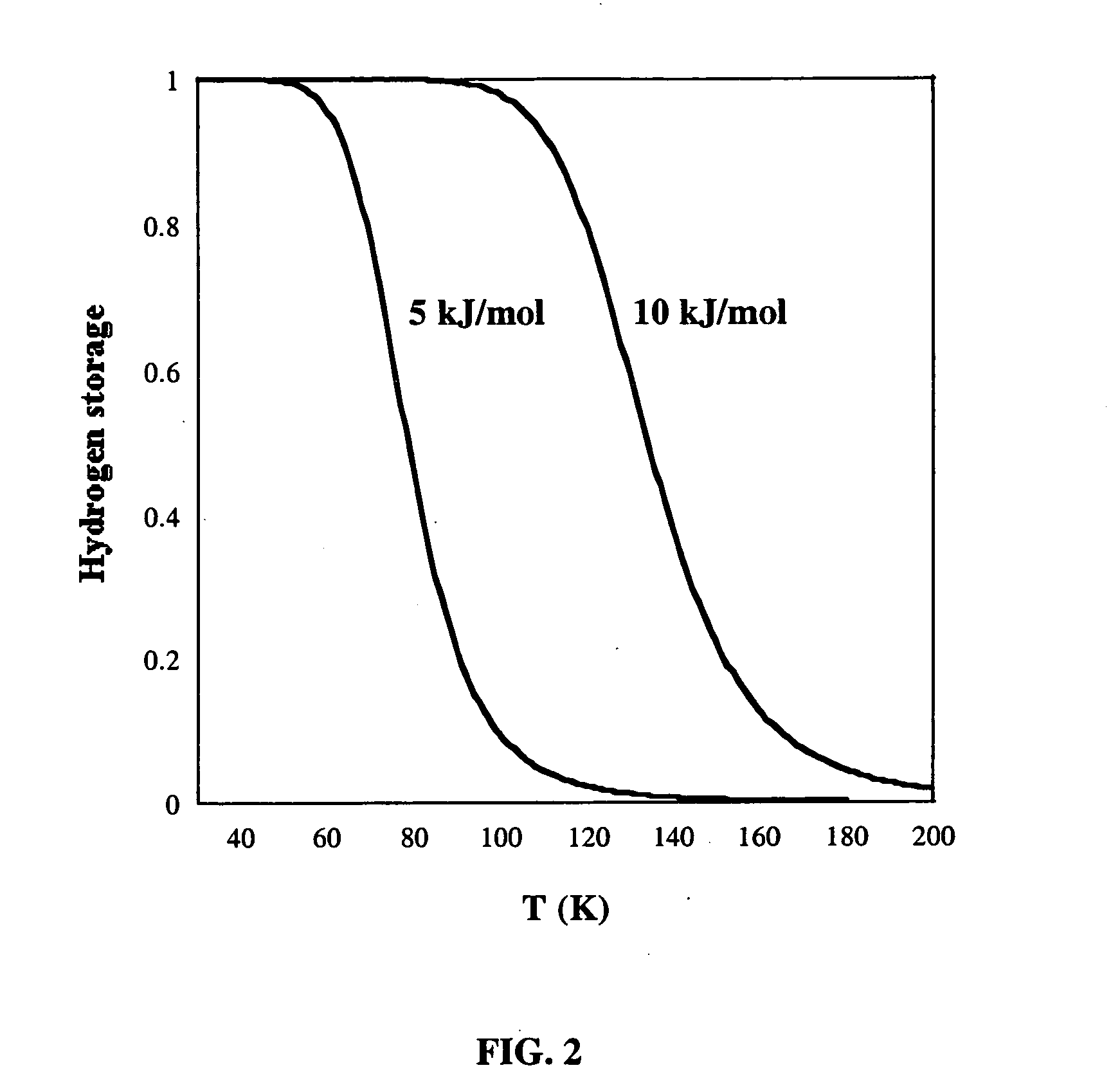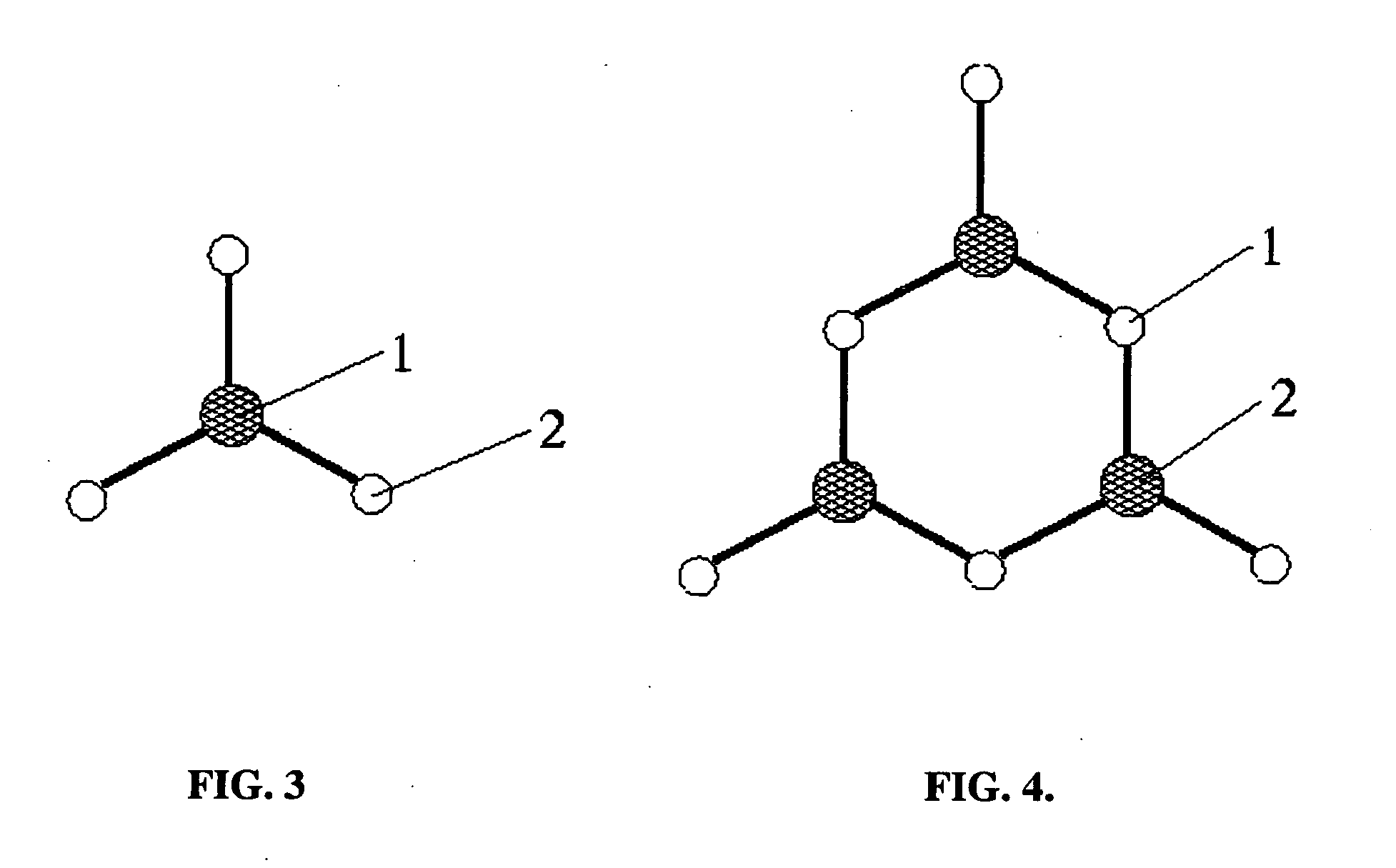Boron oxide and related compounds for hydrogen storage
a technology of hydrogen storage and boron oxide, which is applied in the direction of sulfur compounds, other chemical processes, separation processes, etc., can solve the problems of preventing hydrogen diffusion, unable to achieve fully satisfactory systems, and unable to achieve full satisfaction
- Summary
- Abstract
- Description
- Claims
- Application Information
AI Technical Summary
Benefits of technology
Problems solved by technology
Method used
Image
Examples
examples
Boron Oxide Sample Preparation by Various Methods and Measurement of the Heat of Adsorption
[0055] Boron oxide particles were synthesized by rapidly condensing vapors of boron oxide diluted in argon, a neutral carrier gas as follows: Boron oxide was placed on a platinum crucible situated within a boron nitride tube. The boron nitride tube, itself, was enclosed within an alumina tube. The alumina tube (containing the inner boron nitride tube and crucible within), which can be understood collectively as a housing in which to hold boron oxide while being heated, were placed at the center of a tubular oven. The oven was heated rapidly to a temperature in the range of 1,100-1,500° C., thereby creating a vapor pressure of B2O3 in the range 1×10−6-2×10−3 bar, respectively. Once the oven reached the preset temperature, a flow of neutral gas (argon) into the oven was initiated. The gaseous outflow stream from the oven was captured and collected as particles on a filter; FIG. 10 is a transmis...
PUM
| Property | Measurement | Unit |
|---|---|---|
| temperatures | aaaaa | aaaaa |
| temperatures | aaaaa | aaaaa |
| pressure | aaaaa | aaaaa |
Abstract
Description
Claims
Application Information
 Login to View More
Login to View More - R&D
- Intellectual Property
- Life Sciences
- Materials
- Tech Scout
- Unparalleled Data Quality
- Higher Quality Content
- 60% Fewer Hallucinations
Browse by: Latest US Patents, China's latest patents, Technical Efficacy Thesaurus, Application Domain, Technology Topic, Popular Technical Reports.
© 2025 PatSnap. All rights reserved.Legal|Privacy policy|Modern Slavery Act Transparency Statement|Sitemap|About US| Contact US: help@patsnap.com



